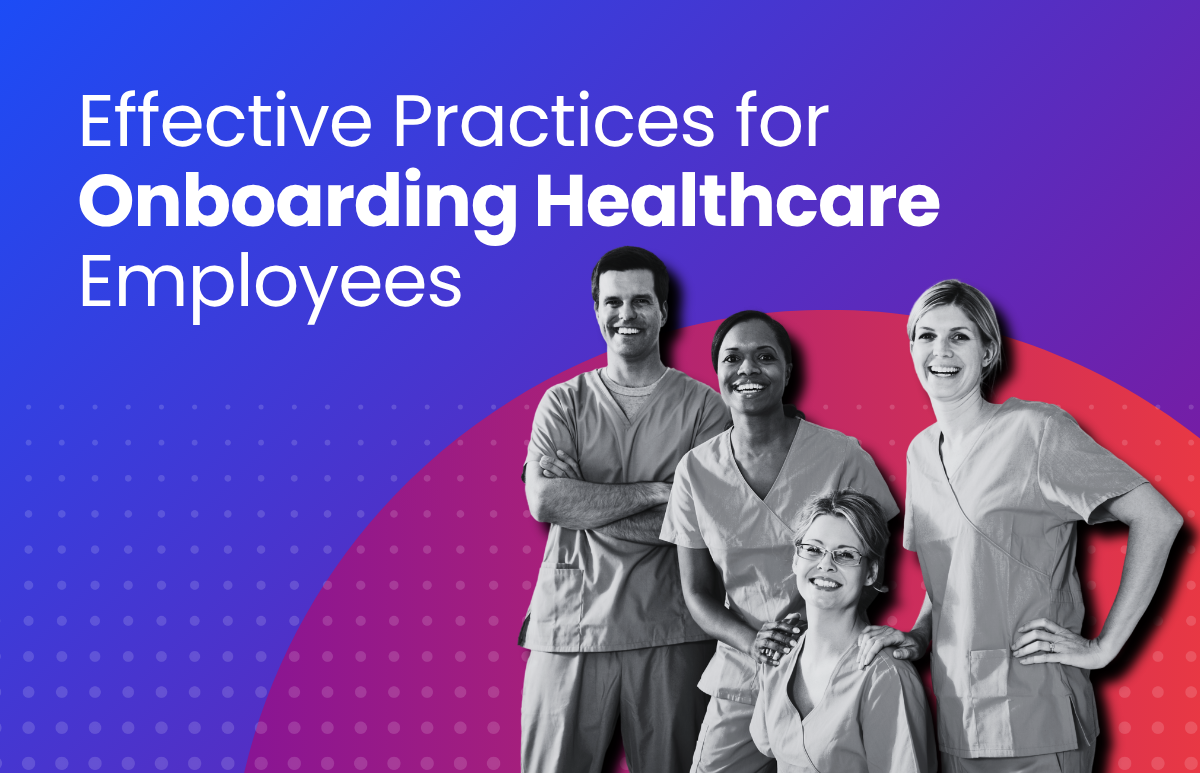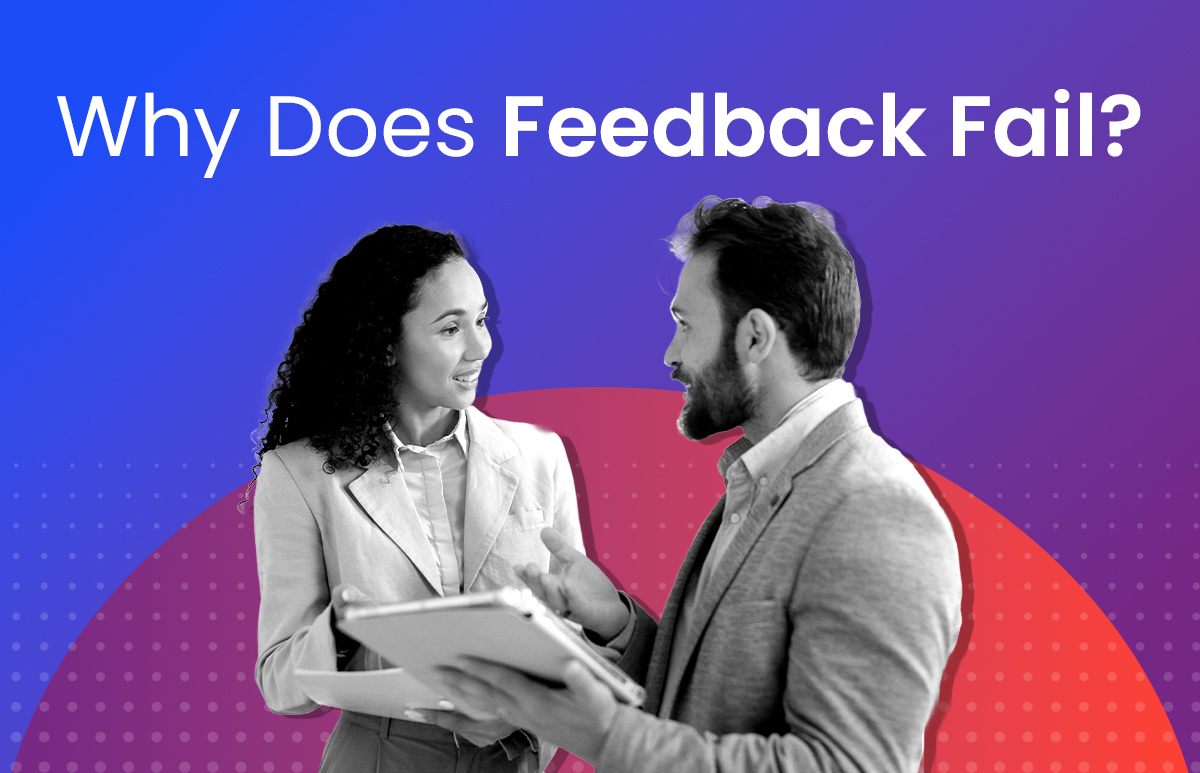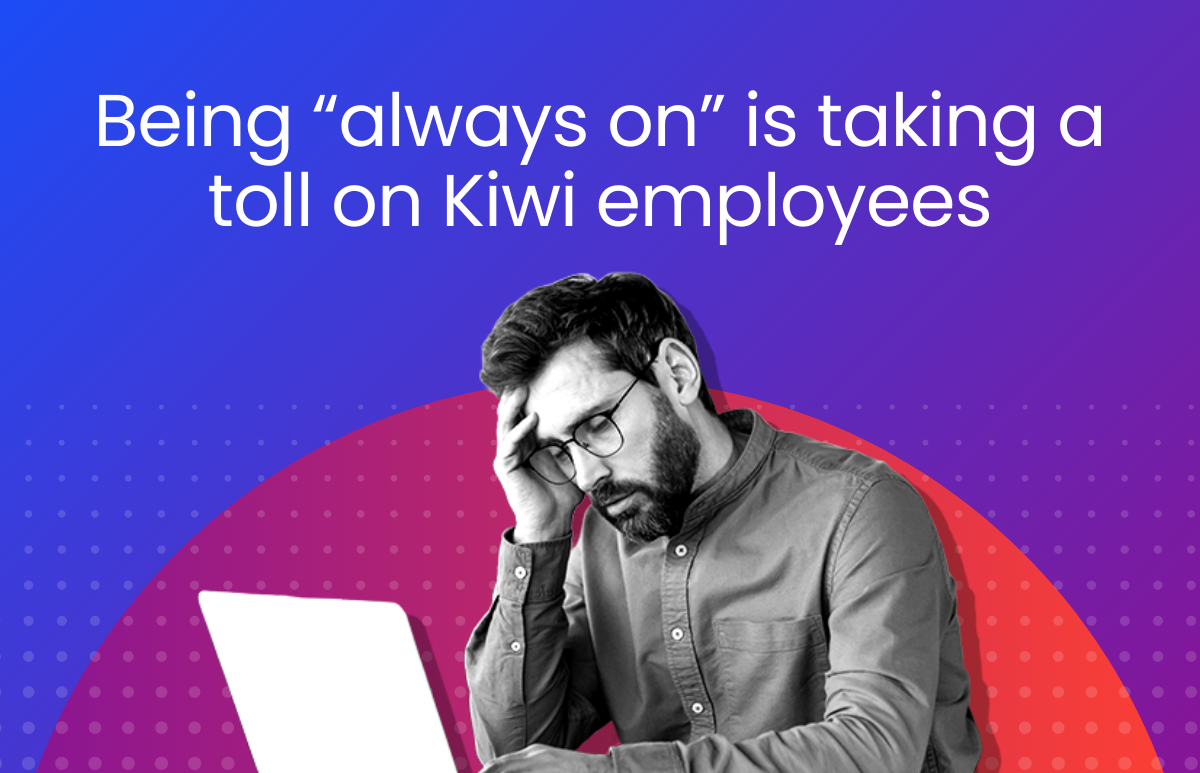Effective Practices for Onboarding Healthcare Employees
Onboarding in healthcare is about more than paperwork - It’s about compliance, confidence and care. In this blog, you’ll discover seven practical strategies to help new staff start strong and stay engaged.

Every new hire in the healthcare space has a direct or indirect impact on patient care. This means that getting onboarding right isn’t just ‘nice to have’, it’s essential.
For HR leaders in Australia’s healthcare sector, onboarding healthcare employees comes with its own unique challenges. It’s a delicate balance of compliance, culture, competency and compassion. The end goal of healthcare onboarding? To help clinical and non-clinical staff get off to the best start possible so they feel supported, knowledgeable, and confident from day one.
In this blog we’ll be sharing practical strategies for improving the onboarding experience in hospitals, clinics and aged care facilities, drawn from best practice, our own studies, and the current realities of healthcare HR.
Why does onboarding matter so much in healthcare?
According to our 2025 HR Industry Benchmark report, workforce demand in the health sector is on a strikingly upward curve. We found that 83% of Australian healthcare and social assistance organisations expect their workforce to increase over the coming year, even in the face of growing staff shortages.
We also found that almost one third of healthcare and social assistance organisations see a probation turnover rate of between 11-20% and that 21% rate talent acquisition as one of their top concerns.
When you frame this against a background of high staff burnout, the stakes rise even further. In our recent Employee Sentiment Index, we found that in the first quarter of 2025, 47% of healthcare and social service employees say they felt ‘burnt out’ – up from 34% at the same time last year.
A well-designed onboarding process is one of the most effective ways to ease these collective workforce pressures and deliver better outcomes. But when onboarding falls short, it can do the opposite, fuelling turnover, burnout and compliance risk at a time when you can least afford it.
A well-structured onboarding program can:
- Reduce early attrition by setting clear expectations
- Strengthen compliance with mandatory training and AHPRA registration
- Improve patient safety through faster competency verification
- Boost engagement by connecting people to their purpose early on
Let’s look at seven practical steps you can take to create a comprehensive onboarding process that improves retention, employee satisfaction, and ultimately, meaningful patient health outcomes.
1) Start onboarding before day one
Pre-boarding is your first opportunity to engage new hires and prep them for success. Send welcome packs, digital forms, and essential reading before their start date. This early engagement can reduce anxiety, speed up credential verification and help employees arrive ready to go.
Pre-boarding essentials:
- Online submission of qualifications, immunisation records and identity checks
- Clear guidance on required training or e-learning modules
- Welcome videos and team introductions
- Access to organisational values and policies
Once you’ve laid the groundwork with pre-boarding, it’s time to ensure that all compliance requirements are met.
2) Focus on compliance without losing the human touch
Healthcare onboarding must meet rigorous standards and compliance will always be top of mind. That means tracking licenses, credentials, Working With Vulnerable People checks, AHPRA registration, Medicare provider numbers and more.
But compliance doesn’t have to feel clinical. Pairing compliance tracking through HR software with a simple, personal gesture, such as a short call from a manager or HR leader, can make a world of difference.
Tip: Use digital systems to automate document collection and expiry tracking, freeing HR to focus on people, not paperwork. Modular HR solutions like ELMO are designed for this exact purpose – capturing acknowledgements, tracking expiry dates and producing audit-ready reports in minutes.
With compliance covered, it’s time to create a welcoming and structured first week that helps new hires feel confident and connected.
3) Make their first week purposeful and welcoming
In healthcare, time is tight and pressure is high. Still, investing in a new hire’s first week pays off long-term – especially when it comes to retention, competency, and job satisfaction. Start by creating a schedule that balances essential compliance training and role familiarisation with meaningful introductions.
Day one to five checklist:
- Orientation to the facility and safety procedures
- Introduction to key leaders, teams and mentors
- Access to patient information systems and clinical equipment training
- Cultural safety and diversity training
- Daily check-ins to answer questions
A strong first week sets the tone, but ongoing learning is key to building skills and confidence in the early days.
4) Build confidence through structured learning
You want new hires to feel confident early in both skills and systems. This is why a blended learning approach (combining digital courses, supervised practice and micro-learning on the job) can be a great way to help fresh staff reach competency faster.
When not in-person, use a learning management system to:
- Deliver automated role-based training by department or location
- Track completion rates and generate compliance reports for audits
- Support continuing professional development with access to learning modules
Tip: With systems like ELMO Learning, HR teams can automate mandatory training, track CPD hours and produce reports in minutes – reducing compliance risk and freeing up your time for personal staff support.
In addition to formal training, personal support can make a huge difference, especially in fast-paced or complex healthcare environments.
5) Pair every new hire with a mentor or colleague
Healthcare environments can be particularly complex and overwhelming, especially for internationally trained staff or those new to high-pressure settings. Assigning a mentor builds cultural connection, confidence and retention.
Mentorship programs work best when:
- Mentors are trained and recognised for their role
- Check-ins are scheduled during the first 90 days
- Feedback flows both ways — mentor and mentee
This kind of early support can help reduce turnover and fosters a culture of care that extends to patients and health outcomes.
While mentorship lays a great foundation, tracking progress ensures new staff continue to grow and meet expectations beyond their first month.
6) Turn onboarding into long-term performance
Effective onboarding doesn’t stop once the paperwork is complete and the pay runs have begun. Great onboarding also lays the groundwork for long-term performance and retention.
The first 90 days are usually critical for helping new healthcare employees build confidence, align with organisational values, and understand what success looks like in their role.
It’s prudent to use structured 30, 60, and 90-day check-ins to provide feedback, set clear expectations, and review progress. Managers should have regular, two-way conversations that go beyond compliance or basic role expectations to discuss goals, challenges, and development opportunities. Better yet, you can structure and automate this process with purpose-built performance solutions.
With performance management tools, HR teams can:
- Standardise early review cycles and automate reminders for check-ins
- Align individual goals with organisational outcomes such as patient care quality and safety
- Capture and track feedback in real time to identify who needs extra support early
- Create development plans that help new hires transition from onboarding to ongoing growth
Tip: By connecting onboarding milestones with performance goals managed through solutions like ELMO Performance, HR leaders gain clearer visibility into how early experiences shape long-term performance, engagement, and retention. These insights help refine onboarding practices and strengthen people strategies across the employee lifecycle.
To make all of these onboarding steps scalable, reliable and consistent, technology is your best ally.
7) Embrace technology to scale without losing a personal touch
Many healthcare HR teams still rely on manual or spreadsheet-based onboarding, training and performance management, leaving room for errors and compliance risk. By automating many aspects of healthcare employee onboarding, you can maintain better consistency, superior accuracy and free up valuable time for the more personal aspects of people and culture.
Digital onboarding tools can:
- Drastically reduce administrative workloads
- Ensure consistency across facilities and regions
- Deliver a personalised experience at scale
- Improve visibility for HR and managers
Food for thought
Onboarding healthcare employees is about more than just ticking boxes. It’s about building trust between people, teams and patients. By combining compliance precision with empathy and structure, HR leaders can create onboarding programs that improve retention, safety and engagement across the entire organisation.
Whether you manage a hospital, aged care facility or regional health service, the key is consistency. Having one clear process, one central platform and one shared goal helps people deliver exceptional care from day one.
Ready to Transform Your Onboarding
To see how ELMO’s onboarding suite can transform your healthcare staffing outcomes, speak to our team today.
 HR Core
HR Core 









